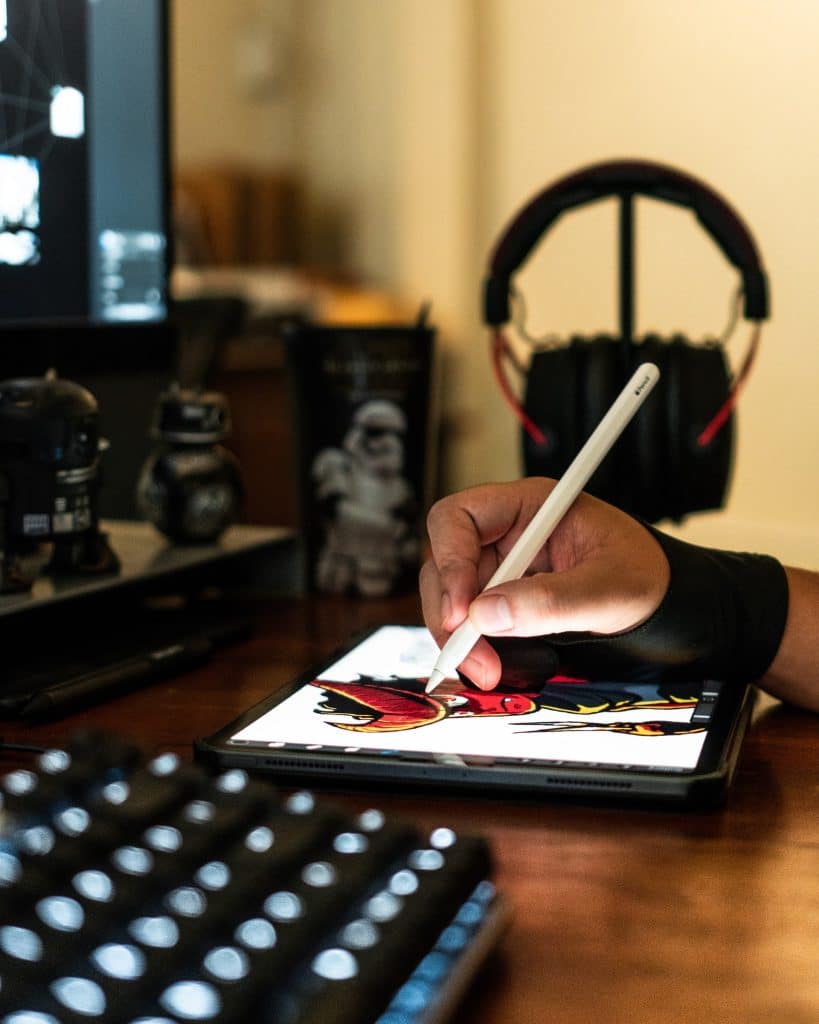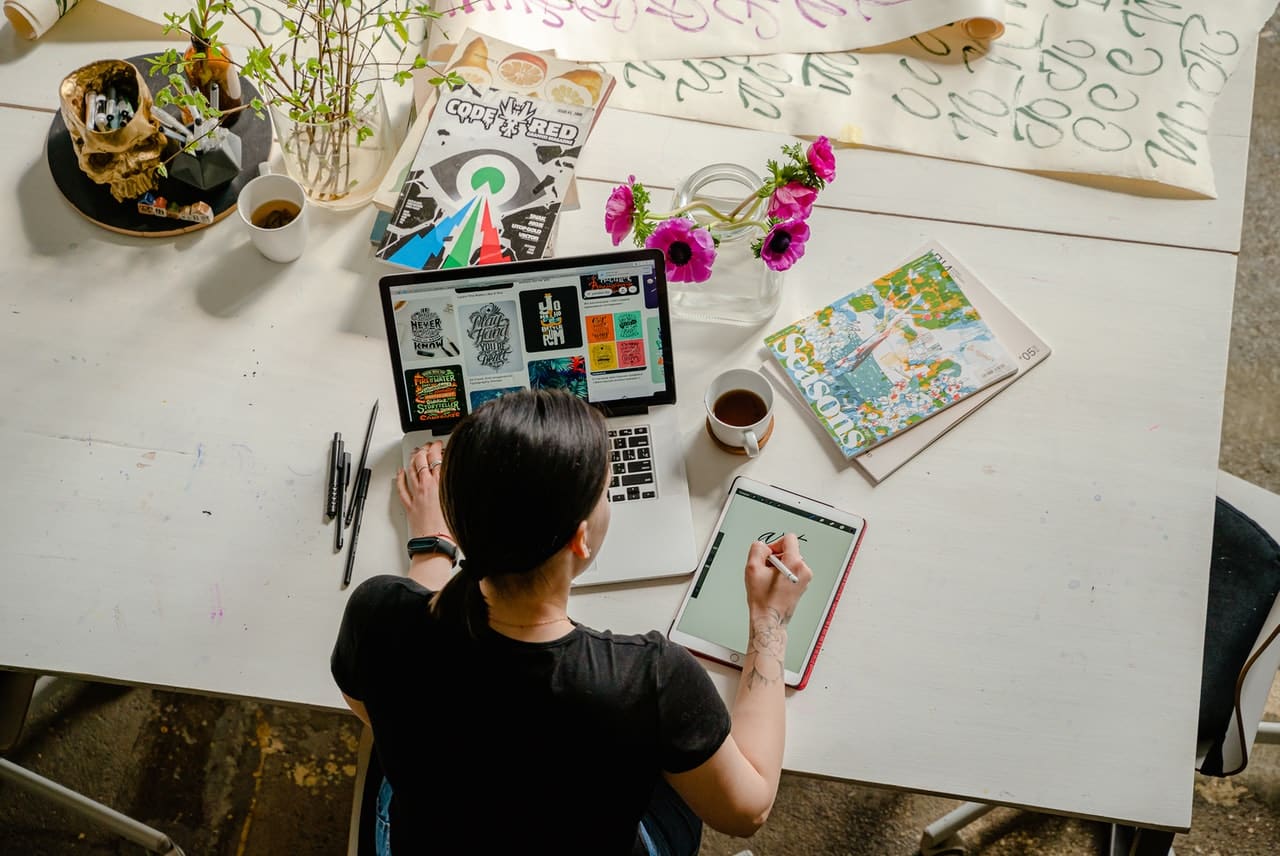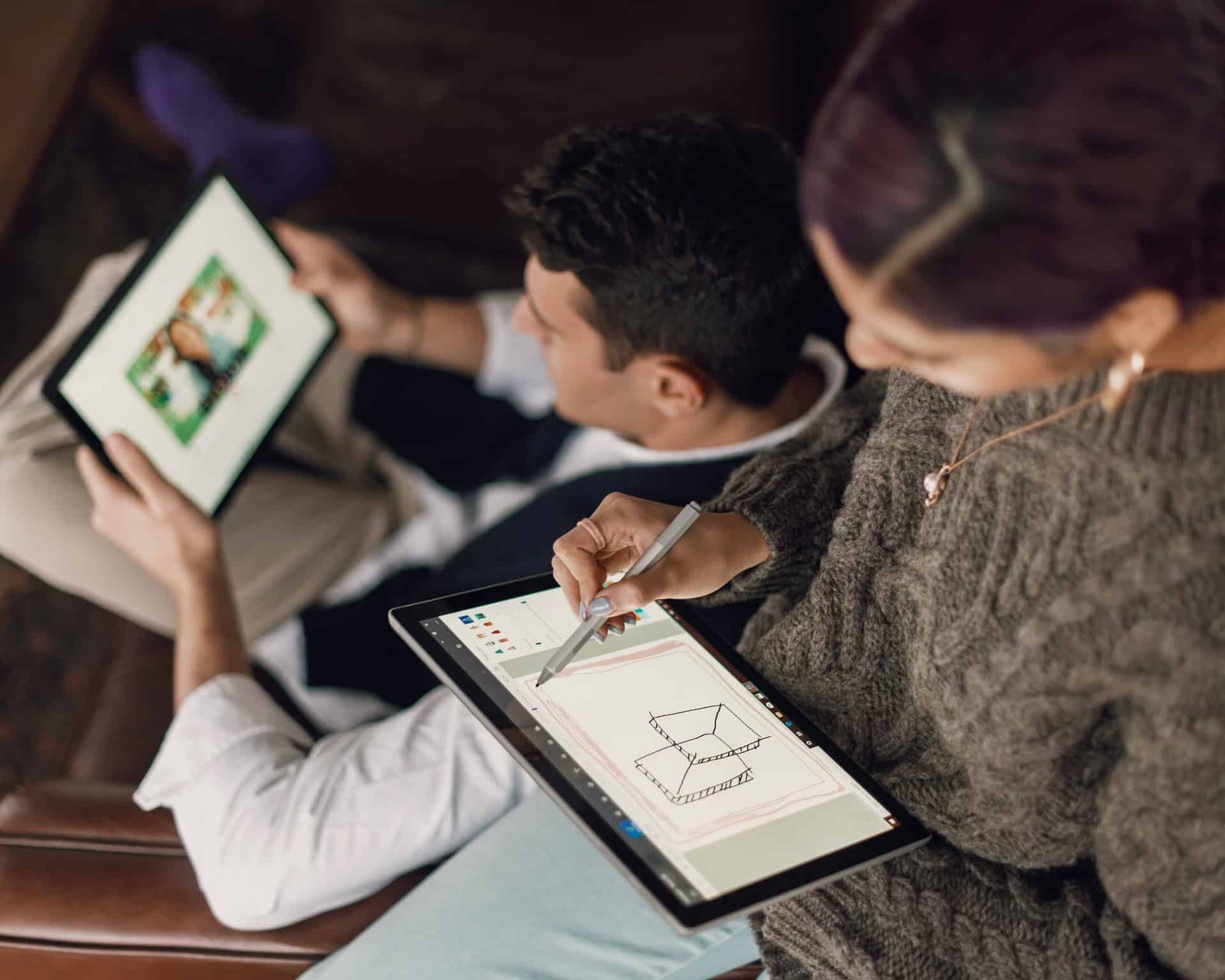While just about everything we interact with that isn’t part of the natural world requires some design work to go into its creation, most types of design fall under one of these main categories.
Graphic designers create visual communications that serve specified functions and that are usually aimed at a specific demographic or audience. A graphic designer might create concert posters aimed at appealing to an artist’s fans, wallpaper designs for a home decor company, or design what will be printed on the packaging for a product to ensure that customers understand what the benefits of the product are.
Almost every business requires the work of graphic designers at least occasionally, and with more and more of our lives taking place online, designs that help brands stand out can be very valuable.
Fashion designers conceptualize and create garments and other fashion accessories. While luxury brands may come to mind when you hear the term “fashion designer”, all garments need to be designed by someone with fashion or garment design skills.
A fashion designer creating runway pieces may be more focused on coming up with pieces that are artistic, dramatic, or highly conceptual. A fashion designer working for a brand that creates more wearable everyday clothes will have a different focus, prioritizing comfort, practicality, and durability of materials.
Interior designers create functional, aesthetically pleasing spaces for their clients. They don’t just purchase and arrange furniture and decor; instead, they evaluate the opportunities and limitations of the space they are working with and create the environment best suited to the needs of their clients.
Like all design work, interior design is about addressing the problems an interior space presents and finding a solution that improves the lives of those inhabiting the space while also achieving the aesthetic goals of the client.
Architectural design is the art and science of planning structures such as homes, commercial buildings, artistic venues, or any other kind of building. This type of design is very technical and is often done with the oversight of engineers who can ensure that the structures are safe and can withstand regular use as well as intense weather conditions.
Like other kinds of design, there is also a creative component, as the architectural designer must come up with the best, most aesthetically pleasing way of meeting the goals of the project while also staying within the budget and within the bounds of any other restrictions, such as building codes.
Creative directors may not have the word “designer” in their title, but their work definitely has a large design component. Creative directors are responsible for coming up with and overseeing the creative vision for a project or even a brand.
Creative directors may also work with other designers, depending on the project or task at hand. For example, the creative director for a cosmetics campaign may work with set designers and graphic designers to bring the vision to life.
Set designers conceptualize and create sets that transport people to a different place. A set designer may work in the world of theater or film coming up with sets that help tell the story being conveyed in a play, movie, or even commercial.
Set designers can also be part of the team for photography campaigns, creating the perfect setting for an ad campaign, product photo, or any other image that requires a styled setting.
Industrial designers work on products that are designed to be mass-produced. While other product designers may design products that can be handmade or made on a small scale industrial designers are more focused on designing the products that are made on a large scale and transported all over the world. For example, industrial designers are behind the designs of appliances, automobiles, and many of your favorite household items.
While furniture design can be considered a subset of industrial design, some furniture designers create projects that they can also make themselves. These designers may be considered more artisanal, while those designing for large brands such as IKEA can be considered industrial furniture designers.
Jewelry designers create pieces that evoke style, luxury, beauty, or any other message that their brand aims to convey. They take into account design principles such as balance and color theory, but they also need an understanding of the materials that are used in the making of jewelry and the different manufacturing methods that can produce various effects. Jewelry design could be considered a subset of fashion design.
Packaging designers come up with the best possible packaging solutions based on the requirements of the product that is being packaged. Like most design professions, this type of design requires a mix of practical and artistic thinking.
The packaging should be effective at containing and protecting the product, may need to be light and weather resistant depending on how it will be shipped, and also needs to be attractive and appealing to the target customer of the product.
With so much of our lives taking place online, from work to shopping and entertainment, web design is more important than ever. Web designers need to create functional websites that fit the brand of their client, and they also need to take into account the fact that more web browsing is taking place on mobile devices. Websites need to look just as good and work just as well on mobile as they do on desktop.
UI/UX refers to user interface and user experience design. These designers make sure that complex digital products, such as apps, software and websites, are easy to use from the perspective of the consumer who is interacting with them for the first time.
Brand designers conceptualize and help to create a company’s identity, from it’s visual representation to its voice. While there may be some overlap with the tasks of graphic designers, brand designers may work on non-graphic aspects of a brand as well, such as helping to determine their key values and how these can be represented through touchpoints with the brand.


